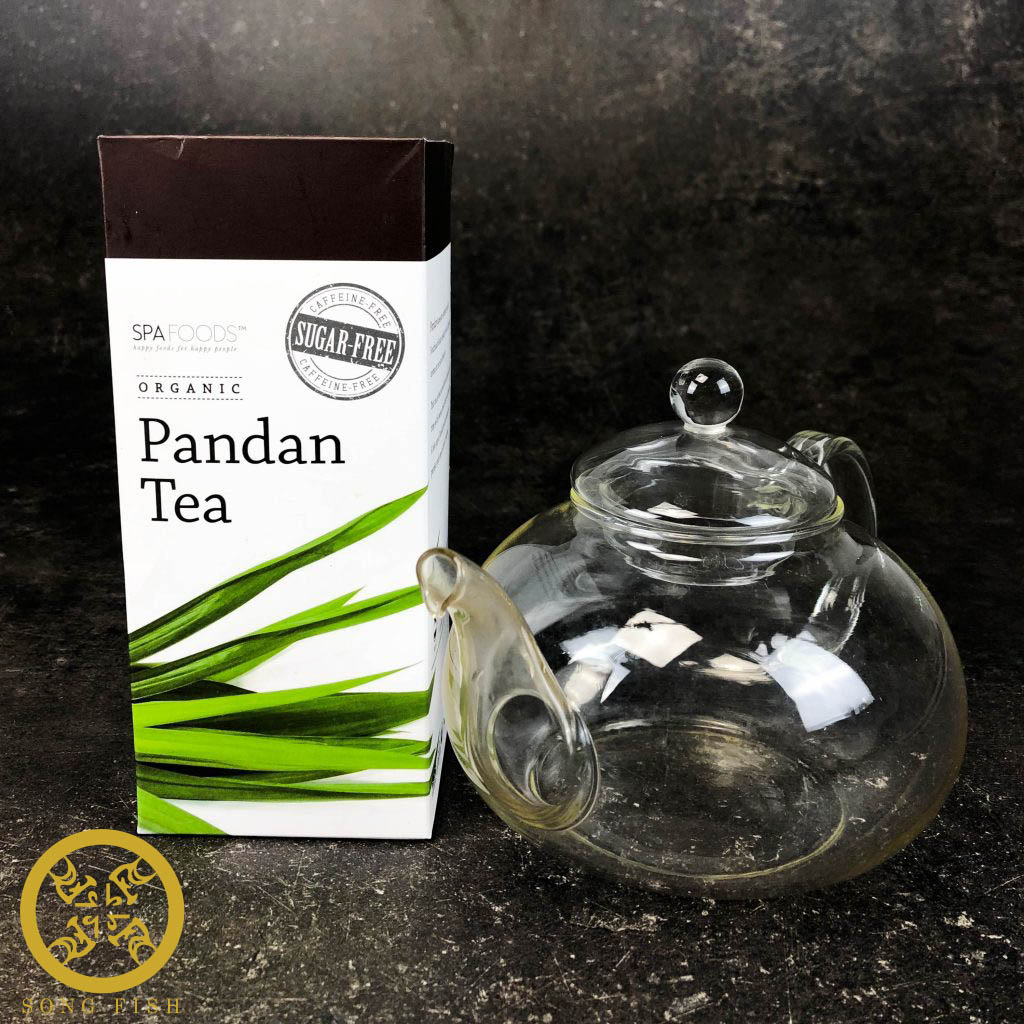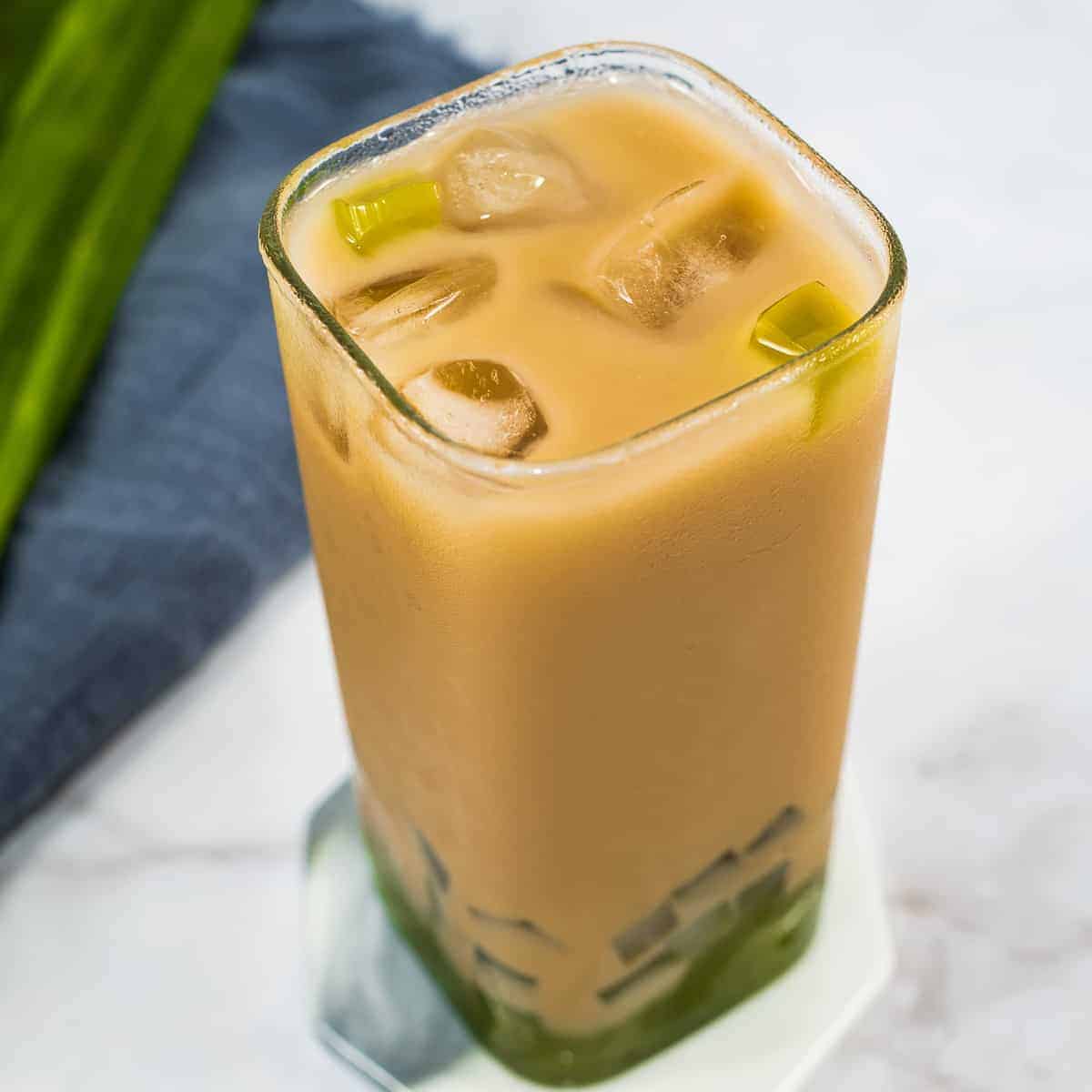Pandanus tea, a captivating beverage originating from Southeast Asia, has been cherished for centuries for its distinctive aroma and purported health benefits. Derived from the leaves of the Pandanus amaryllifolius plant, this fragrant infusion has found its way into culinary traditions and medicinal practices alike.
As we delve into the world of pandan tea, we will explore its botanical origins, traditional preparation methods, culinary applications, potential health benefits, and cultural significance. Along the way, we will uncover the secrets behind its alluring flavor and aroma, and discover how this remarkable tea has become an integral part of Southeast Asian culture.
Pandanus Amaryllifolius Overview

Pandanus amaryllifolius , scientifically classified as a monocotyledon under the Pandanaceae family, is a remarkable plant species that has garnered significant attention due to its unique characteristics and diverse applications. This tropical plant, commonly known as pandan, screw pine, or fragrant screw pine, is native to Southeast Asia and the Pacific Islands, where it thrives in warm, humid environments.
Physical Characteristics
Pandanus amaryllifolius exhibits a distinctive appearance, making it easily recognizable among other plant species. It typically grows as a shrub or small tree, reaching heights of up to 6 meters (20 feet). The plant’s most striking feature is its long, narrow leaves, which are arranged in a spiral pattern around the stem.
These leaves are sword-shaped, with sharp, serrated edges and a leathery texture. They can grow up to 1 meter (3 feet) in length and are often variegated with shades of green, yellow, and white.
The stems of Pandanus amaryllifolius are stout and woody, with a grayish-brown bark. The plant produces aerial roots that extend from the lower part of the stem, providing additional support and stability. These roots often develop into stilt roots, which help anchor the plant firmly in the ground.
The flowers of Pandanus amaryllifolius are small and inconspicuous, with a greenish-yellow color. They are borne in clusters at the base of the leaves and are pollinated by insects. The fruits are drupes, which are round or oval-shaped with a hard outer shell and a soft, fleshy interior.
Geographical Distribution and Cultivation
Pandanus amaryllifolius is native to Southeast Asia and the Pacific Islands, where it is widely distributed in tropical and subtropical regions. It is commonly found in coastal areas, swamps, and mangrove forests, as well as in disturbed habitats such as roadsides and abandoned fields.
The plant is widely cultivated throughout its native range and beyond, due to its culinary and medicinal uses. It is propagated through cuttings or seeds, and can be grown in a variety of soil types, including sandy, loamy, and clay soils.
Pandan prefers moist, well-drained soil and can tolerate partial shade, although it grows best in full sun.
Pandanus Tea Preparation
Pandanus tea, with its alluring aroma and refreshing taste, can be prepared using both traditional and modern methods. The choice of fresh or dried pandan leaves, as well as the steeping technique, can influence the final flavor and characteristics of the tea.
Traditional Method
The traditional method of preparing pandan tea involves using fresh pandan leaves. The leaves are washed thoroughly and cut into small pieces. The pieces are then placed in a pot with water and brought to a boil. The tea is allowed to simmer for 10-15 minutes, or until the desired strength is achieved.
The tea is then strained and served hot or cold.
Modern Method
The modern method of preparing pandan tea utilizes dried pandan leaves. The leaves are dried and ground into a powder. The powder is then added to hot water and steeped for 5-10 minutes. This method is convenient and produces a tea that is similar in flavor to the traditional method.
Fresh vs. Dried Pandan Leaves
Fresh pandan leaves produce a tea that is more flavorful and aromatic than tea made with dried leaves. However, fresh leaves are not always readily available. Dried pandan leaves are a convenient alternative and can be used to make a tea that is still flavorful and refreshing.
Steeping Time and Serving Suggestions
The steeping time for pandan tea can be adjusted to achieve the desired strength. For a stronger tea, steep the leaves for a longer period of time. For a milder tea, steep the leaves for a shorter period of time.
Pandan tea can be served hot or cold. It can be enjoyed on its own or with added sweeteners, such as honey or sugar.
Culinary Uses of Pandan Tea
Pandan tea, with its distinctive and alluring aroma, transcends its role as a mere beverage. It has carved a niche for itself in the culinary realm, enhancing the flavor and aroma of both sweet and savory dishes.
In Southeast Asian cuisine, pandan tea is a culinary chameleon, seamlessly blending into a myriad of culinary creations. From fragrant rice dishes to aromatic curries, pandan tea adds a subtle yet unmistakable depth of flavor.
Sweet Delights
In the realm of desserts, pandan tea unveils its sweet side. Its essence infuses pastries and cakes with an ethereal aroma, tantalizing the senses with each bite. Pandan chiffon cake, a beloved treat in many Southeast Asian countries, showcases the tea’s ability to transform ordinary ingredients into an extraordinary culinary experience.
Savory Enhancements
Pandan tea’s versatility extends beyond the realm of sweets. It lends its aromatic charm to savory dishes as well. In Malaysia, nasi lemak, a national dish, owes its captivating aroma to the addition of pandan tea. The tea’s delicate flavor complements the richness of the coconut milk and the spiciness of the accompanying sambal.
Health Benefits of Pandan Tea
Pandan tea is not just a delightful beverage but also a potential source of various health benefits. Its antioxidant, anti-inflammatory, and antimicrobial properties have been recognized in traditional medicine and are now being explored in modern healthcare.
Antioxidant Properties
Pandan leaves contain a rich array of antioxidants, including flavonoids and phenolic compounds. These antioxidants help neutralize free radicals, which are unstable molecules that can damage cells and contribute to aging and chronic diseases. By scavenging free radicals, pandan tea may help protect against oxidative stress and reduce the risk of certain conditions.
Anti-inflammatory Properties
Inflammation is a natural response to injury or infection, but chronic inflammation can contribute to various health issues. Pandan tea has anti-inflammatory properties that may help alleviate inflammation and reduce symptoms associated with conditions such as arthritis, asthma, and inflammatory bowel disease.
Antimicrobial Properties
Studies have shown that pandan extract exhibits antimicrobial activity against a range of bacteria and fungi. This property may contribute to pandan tea’s traditional use in treating infections and promoting oral hygiene.
Traditional Medicinal Uses
In traditional medicine, pandan tea has been used for centuries to treat a variety of ailments, including headaches, fever, indigestion, and anxiety. It is also believed to have diuretic and antispasmodic effects.
Potential Role in Modern Healthcare
The health benefits of pandan tea are still being investigated, but preliminary research suggests it may have potential applications in modern healthcare. For example, its antioxidant properties may be beneficial in preventing neurodegenerative diseases, while its anti-inflammatory properties may help treat inflammatory conditions.
Variations and Adaptations
Pandan tea offers a versatile base for culinary exploration, allowing for numerous variations and adaptations. By incorporating additional ingredients or adjusting the brewing process, you can tailor the tea to suit your preferences and create unique flavor profiles.
Infusions and Blends
Enhance the complexity of pandan tea by infusing it with other aromatic ingredients. Consider adding slices of fresh ginger for a zesty kick, or lemongrass stalks for a refreshing citrusy note. For a tropical twist, blend pandan tea with coconut milk to create a creamy and subtly sweet beverage.
Sweeteners and Spices
Adjust the sweetness of pandan tea according to your taste. Honey, agave nectar, or sugar can be added to taste. Experiment with adding a pinch of cinnamon or nutmeg for a warm and aromatic touch.
Creative Blends
Unleash your creativity by blending pandan tea with other herbal teas. Combine it with chamomile for a calming and floral infusion, or with peppermint for a refreshing and invigorating blend. For a tropical delight, blend pandan tea with pineapple chunks and coconut flakes.
Cultural Significance of Pandan Tea

In Southeast Asian cultures, pandan tea holds a significant place, deeply entwined with traditions, festivals, and everyday life. It symbolizes purity, good fortune, and harmony, playing a vital role in various ceremonies and celebrations.
Traditional Ceremonies
Pandan tea is often used in traditional ceremonies to invoke blessings and ward off evil spirits. During weddings, the tea is served to the couple to symbolize their union and wish them a prosperous and harmonious life together.
Festivals
During festivals like the Chinese New Year and the Mid-Autumn Festival, pandan tea is a staple beverage. Its green color and fragrant aroma are believed to bring good luck and prosperity. In some cultures, pandan leaves are woven into intricate decorations to adorn homes and temples during these festivities.
Everyday Life
In many Southeast Asian households, pandan tea is a comforting and refreshing drink enjoyed throughout the day. Its subtle sweetness and delicate aroma make it a popular choice for breakfast, afternoon tea, or as a relaxing evening beverage.
Symbolism and Cultural Beliefs
Pandan tea is not merely a drink but also carries cultural symbolism and beliefs. In some societies, it is believed to have medicinal properties, such as aiding digestion and reducing stress. Its green color is often associated with nature, growth, and renewal.
Closing Summary
In conclusion, pandan tea is a versatile and captivating beverage that offers a delightful blend of culinary and medicinal benefits. Its fragrant aroma and distinctive flavor have made it a beloved ingredient in Southeast Asian cuisine, while its potential health properties continue to be explored by modern science.
Whether enjoyed as a refreshing drink or incorporated into culinary creations, pandan tea is a testament to the rich botanical and cultural heritage of Southeast Asia.
Common Queries
Is pandan tea caffeine-free?
Yes, pandan tea is naturally caffeine-free, making it a suitable choice for those who are sensitive to caffeine or prefer a relaxing beverage before bedtime.
How long should I steep pandan tea leaves?
For optimal flavor, steep pandan tea leaves for 5-7 minutes in hot water. This will allow the leaves to release their full aroma and flavor into the water.
Can I use dried pandan leaves to make tea?
Yes, you can use dried pandan leaves to make tea. However, dried leaves may require a longer steeping time (10-15 minutes) to release their flavor compared to fresh leaves.
What are some culinary uses of pandan tea?
Pandanus tea can be used as a flavoring agent in both sweet and savory dishes. It is commonly used in Southeast Asian desserts, such as cakes, puddings, and ice cream, to enhance their flavor and aroma. It can also be added to savory dishes, such as curries and stir-fries, to impart a subtle floral note.
What are the potential health benefits of pandan tea?
Pandanus tea is rich in antioxidants and has been traditionally used for its anti-inflammatory and antimicrobial properties. It is believed to have potential benefits for digestion, blood sugar regulation, and mood.
